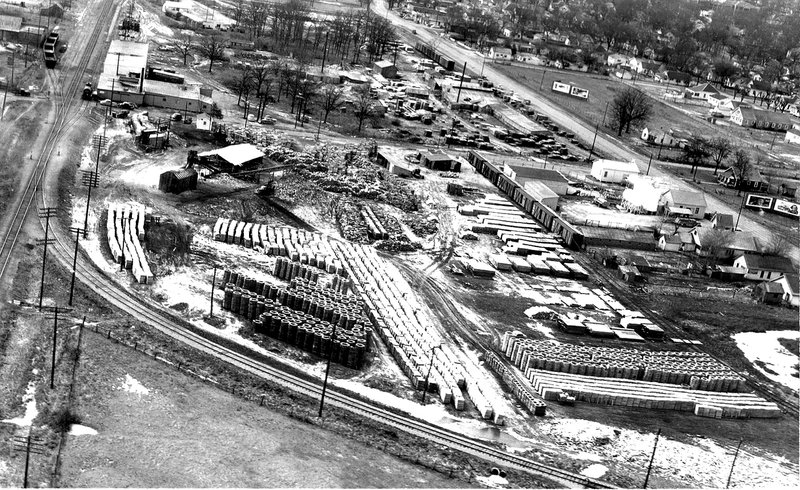ROGERS — At the end of World War II, the major industries in Rogers were the Harris Bakery and Speas Vinegar. The apple orchards that once covered the landscape in Benton County were winding down and the poultry industry was in its infancy.
In April 1946, E.C. "Lige" Eversole and C.H. Bryant opened a stave mill at Olive Street and the Frisco railroad tracks. The location was out in the country, and Olive Street was a dirt, or mud, road.
By 1950, making staves was one of the leading industries in Arkansas, especially in Rogers. It was renamed the Eversole Stave Mill, and that year it manufactured 2 million board feet of white oak staves and paid more than $318,000 for payroll and log purchases.
A stave is used to make wooden barrels, is usually a 1¼-inch-by-36-inch length of oak and varies in width from 2 inches to six inches. The Eversole Mill also cut staves 24 inches long for the round tops and bottoms of the barrels. After cutting and shaping, the staves were stacked and air dried until they were shipped to barrel manufacturers all over the United States, and to foreign countries. The staves manufactured in Rogers were primarily used to make 53-gallon bourbon whiskey barrels. Bourbon must be made by aging whiskey in white oak barrels charred on the inside to add flavor, and many of the staves produced here wound up in Jim Beam barrels.
Recently Clayton and Sheila Eversole kindly allowed me to visit and ask questions about the stave business and related much of the previous information. I asked Clayton about his first job at the mill.
"I grew up in the business, so from the time I was very small, I worked at the mill, unloading trucks and stacking the staves to dry," Clayton Eversole said. "My first official job was measuring bolts, about 1958 at the age of 20. You used a stick similar to a yardstick and measured the split lengths of wood (bolts) brought in by local woodcutters to determine the amount usable to make staves. The staves had to be defect free so the barrels wouldn't leak, so the defects in the logs were subtracted from the total, and the supplier was only paid for the usable part."
"Clayton's Dad wanted him to have experience in every part of the process, so Clayton had to work at every job at the mill," Sheila Eversole said.
I put out a plea for memories of the stave mill from local residents and on a Rogers website. Since I knew Gary Townzen, local barber and city alderman, grew up just east of the stave mill, I asked him about his memories.
"When I was a little boy, we would play in the stacks of staves at the mill," Townzen said. "The round stacks were hollow inside and it made a perfect fort. We didn't do any harm, and they never ran us off."
Steve VanHook contributed. "My Dad, C.P. VanHook, owned sawmills east of Rogers in the War Eagle area. From the 1930s until the 1960s, he bought tracts of land for lumber and for staves. The best trees went for lumber and the lower-grade went into staves. He sold many a truckload of logs to Eversole's."
About 1961, the stave mill had outgrown the location on Olive Street, so the Eversoles moved the plant north of town near Arkansas Street and U.S. 62, now the location of Rogers Recycling Center. I asked Clayton Eversole why they moved.
"After the staves were produced, they had to be assembled in neat square and round stacks to air dry, and this required acres of space. Also, the waste that could not be sold, had to be burned in a special incinerator, and the town had grown up around the mill, which made it difficult to burn the refuse."
In 1978, Lige Eversole retired and Clayton Eversole became the sole owner with sales and timber purchases of $2 million annually. Clayton owned the stave mill in Rogers, and mills in Lexington and Aurora, Mo., Pawnee, Okla., and Cass.
In the early 1980s, the demand for independently produced staves diminished because of a decline in bourbon use and also because barrel manufacturers began producing their own staves. In September 1985, the Rogers Eversole Stave Mill was the last operating mill in Arkansas, but sadly closed after producing jobs for local residents and parts for wooden barrels for 39 years.
Commentary on 03/06/2014

